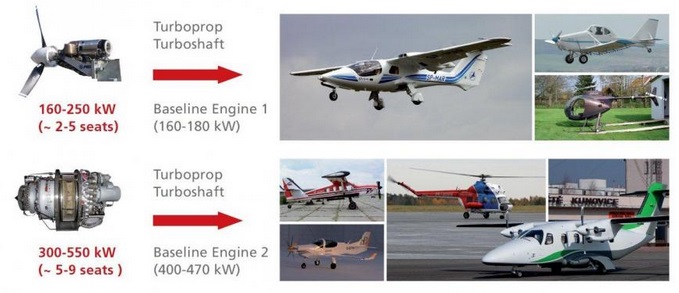The goal of the ESPOSA project is to develop new key components for small gas turbine engines up to 1000 kW and to develop new lean manufacture technologies. The project will also deal with engine related systems that will contribute to the overall propulsion unit efficiency, safety and pilot workload reduction.

The ESPOSA project plans to deliver better GTE engine affordability and 10-14% reduction of direct operating costs through the development of advanced concepts for key engine components, development of lean manufacture technologies and modern engine systems improving engine overall efficiency and maintainability. The project will also deliver new or adjusted simulation and design tools and methodologies for engine integration into aircraft. The enhanced simulation capability straightens the aircraft design and saves developmental costs. ESPOSA also pioneers the smallest power range category for the turbine technology. All these can help small airplanes and helicopters to better establish themselves as a part of air transport system including also aero-taxi operation.

The ESPOSA project will provide better affordability of small gas turbine engines for smaller aircraft manufacturers and last but not least contribute to better protection of the environment by reducing CO2/NOx emissions and to efficient use of fossil fuels.
Area of systems addresses advanced automatic control system for small engines, smart health monitoring system and affordable more electric solution for fuel/ propeller control systems. The major work of the period concentrated on analyses and adoption of technical requirements defined by airframers and engine producers. The performed activities comprised feasibility study of applied technologies, development methodologies and system architecture concepts. Activities on equipment preliminary concept designs started. Advanced design methods for engine/airframe integration are aiming at development of the best practice for turbine engine installation to different types of aircrafts (tractor, pusher, helicopter). SP6 addresses structural design aspects, aeroacoustic optimisation, thermal management and nacelles structures. The work of the first period comprised mainly definition of requirements for different aircraft configuration and digital mock-ups provision.
